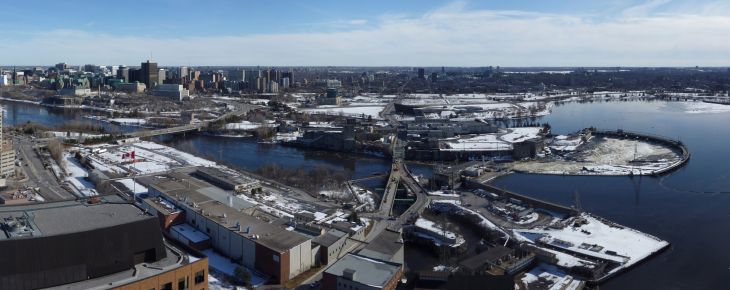

On March 7, 1800, Philemon Wright, his family and several others became the first white settlers in what is now the National Capital Region, carving out a new home on the North shore of the Ottawa at the Chaudière. These hardy pioneers who trekked for a month from Massachusetts were rewarded for their ambition with a grant of 12,000 acres of land, and the community they started grew quickly and prospered.
Wright, who combined sturdy Kentish stock with Yankee ingenuity, was the first to realize the incredible potential of the forest wealth of the Ottawa Valley and the hydro power generation potential of the Chaudière Falls. He made industrial history in 1806 by building the first raft of squared timbers below the Chaudière, and successfully navigating it down the perilous waters of the Ottawa and St. Lawrence Rivers to Quebec City, where it was disassembled and loaded on ships bound for Europe. Wright had created a new export trade, assured the stability of the settlement at the Chaudière, and gave birth to a new type of river personality – the raftsman – a brawling rambunctious type of logger who spent the winter in the forests, and came down the river every spring on rafts, stopping at the Chaudière, carousing around town until his pay cheque was spent.
In 1808, Wright built the first gristmill and sawmill which were completely run by water power, right at the Chaudière. Wright had also opened up the Ottawa Valley to exploitation by the lumber industry. During the War of 1812, Napoleon blockaded the Scandinavian Baltic ports, forcing Britain to turn to Canadian timber for the Royal Navy shipbuilding needs.
In 1829, Wright’s son, Ruggles (after a trip to Sweden to study their innovation), built the first North American timber raft slide, 26 feet wide, at the Devil’s Hole area, to allow safe passage of timber through the treacherous and destructive waters and islands of the Chaudière. Six years later, George Buchanan erected a second slide on the north side of Victoria Island and in 1845 the Government constructed a third slide to the south of Victoria Island, further bolstering the industry. The slides became world-famous and very popular for rides by visiting dignitaries including the Prince of Wales who was in the Capital in 1860 to lay the cornerstone for the Parliament Buildings.
 Wordpress
Wordpress





